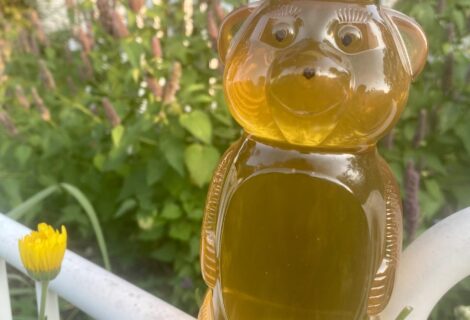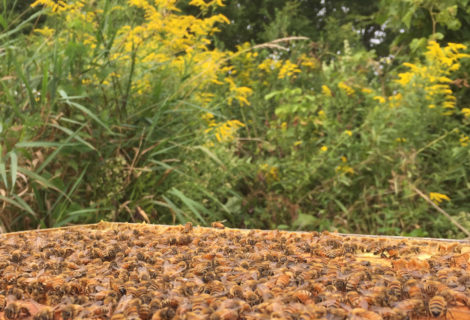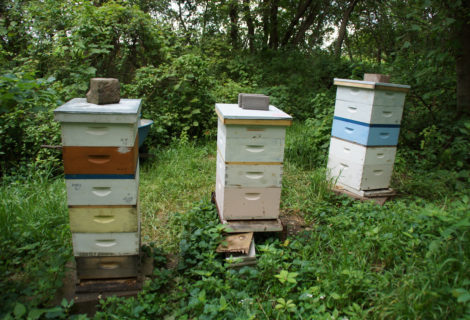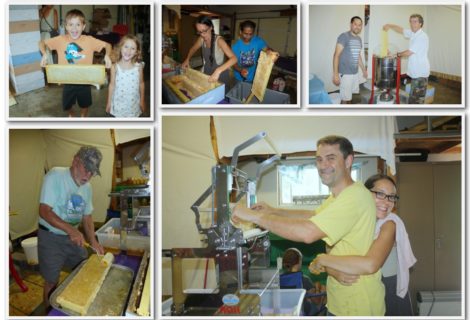Colony vs. Mouse?
The featured image here of the partially consumed mouse was from back on April 22. We were going through the colonies that survived the winter and removing boxes that they did not need anymore (because they ate through them and consumed the honey in them). One of the colonies (which I call C1 or Corner 1, as it is the first one on the corner by the pompous grass) was quite aggressive to us even though I could see the queen and brood in it. Each hive has a bit of its own personality that is usually on display, and this one is the type that beekeepers would say tends to “run hot”. It was generally more aggressive than the others last year, it would have bees flying at cooler temperatures compared to the others, etc. It ran hot and worked hot even though I didn’t pull any honey from it last year. They re-queened themselves mid-summer, and generally did not put their extra energy into honey production. Regardless it seemed to serve them well for the winter.
When I took the boxes off and exposed the bottom board, this is what we found:
We do try to help the bees out in the fall by putting hardware cloth over the hive entrances to help keep out the mice. But sometimes they chew around that or on box corners and edges. “Mouse picked the wrong hive to mess with”, was our comment here though. Bunch of dead bees behind it due to the normal winter attrition, but the single worker guarding the entrance reducer basically embodies the hive personality here: “Don’t mess with us.” If I left the mouse there, the bees would deal with it as they would other large intruders that they cannot physically remove from the hive. They would collect resin from trees and eventually they would “propolize” it over with the resin-glue they make until the entire carcass was mummified and posed no more germ and unsanitary threat to the colony.
 In other news, I found the overwintered colony on our Minnesota property to have a 3-winged queen. Now, bees normally have 4 wings, but the loss of any or all wings of the queen does not pose a problem for the colony since after the queen starts laying brood, she no longer needs to fly again unless the colony swarms. So, I’m hoping they don’t plan on doing that this year.
In other news, I found the overwintered colony on our Minnesota property to have a 3-winged queen. Now, bees normally have 4 wings, but the loss of any or all wings of the queen does not pose a problem for the colony since after the queen starts laying brood, she no longer needs to fly again unless the colony swarms. So, I’m hoping they don’t plan on doing that this year.

Checking out the bees who have consumed much of a pollen patty placed over the top-bars of this box some weeks earlier.
The spring flowers have been popping up and the bees are finding both pollen and nectar now. The first bloom of dandelions has also begun! So we have been celebrating Spring.

A nurse bee tends to eggs that the queen has recently laid. The eggs stand up in the bottom of the cells like tiny grains of rice.

Photo shows “bands” of resources organized across a frame of comb. From the upper left: nectar, pollen, brood, and capped brood.

Another frame of beautiful organization. The queen starts laying in the center of the frame which is to the left of this picture. so the capped brood is the oldest, followed by larvae in various stages, and finally the eggs on the right hand side in the fresh comb that is still being constructed. That means the cell wall s will be made higher as the eggs hatch and the larvae grow fatter.
Meanwhile, the honey house continues to make good progress, thanks to Clair meticulously working on it as he finds time:
Well, that’s the update for now. Happy upcoming Mother’s Day to all you Queen Bees out there!!











Recent Comments